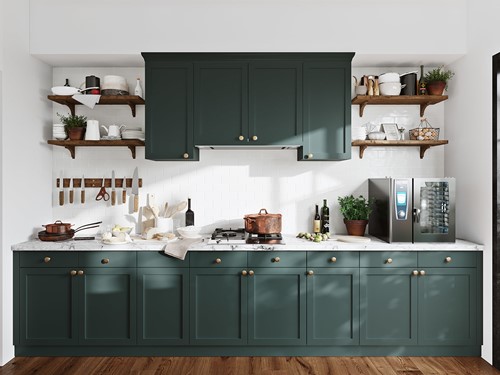
Photo by Jafar Mansuri on Unsplash
To resurface or replace? That's the question. Consider replacing if:
Otherwise, you may want to refinish what you have to make your cabinets.
Replacing cabinets rarely involves building them yourself. Most kitchen remodeling professionals don't even do that. You can purchase pre-made cabinets. They'll fit in most kitchen. But don't forget to measure.
Start by evaluating how the cabinets are attached. Most cabinets simply unscrew from the wall for clean removal. You can now hang new ones in their place. But remember, if you need to stain or finish, always do that and let them dry before hanging. It will just be easier when they're on the floor or a work table.
If it's just the hardware you don't like, consider replacing it instead of the whole cabinet. That's generally a small job that just needs a screwdriver and new handles.
A coat of paint or stain can work wonders. But know that refinishing actually takes a lot longer than hanging new. Plan for three to eight weekends of work and a semi-functional kitchen during that time. The more cabinets, the longer it will take. Let's get started
*Pro tip* Some woods soak up oils like a sponge, so you might need multiple coats to achieve the desired look. That's one reason the job takes multiple weekends since each layer must dry.

Kathy Borawski is a Northampton native who started in the Real Estate Industry in1985. She is a product of the Northampton public schools and a Northampton taxpayer, landlord, and co-founder of HARP, The Hampshire Association of Rental Properties, and a 3rd generation real estate broker, having learned the business from her father.